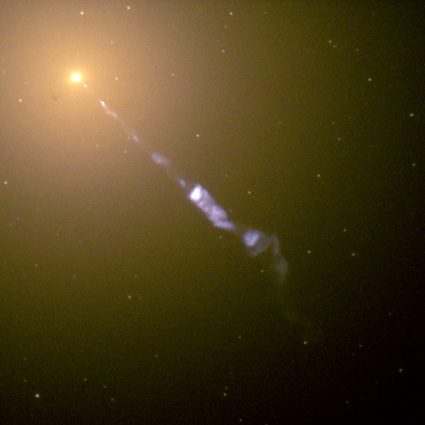|
Leptons are a family of elementary particles, alongside quarks and gauge bosons (also known as force carriers). Like quarks, leptons are fermions (spin-1/2 particles) and are subject to the electromagnetic force, the gravitational force, and weak interaction. But unlike quarks, leptons do not participate in the strong interaction. There are six flavours of leptons, forming three generations. The first generation is the electronic leptons, comprising the electrons, and electron neutrinos; the second is the muonic leptons, comprising muons, and muon neutrinos; and the third is the tauonic leptons, comprising tauons, and tauon neutrinos. Each lepton has a corresponding antiparticle - these antiparticles are known as antileptons. Leptons are an important part of the Standard Model, especially the electrons which are one of the components of atoms, alongside protons and neutrons. Exotic atoms with muons and tauons instead of electrons can also be synthesized. |
 |
Dos observaciones quiero
agregar: una sobre la naturaleza del Aleph; otra, sobre su nombre.
Éste, como es sabido, es el de la primera letra del alfabeto
de la lengua sagrada. Su aplicación al círculo
de mi historia no parece casual. Para la Cábala esa letra
significa el En Soph, la ilimitada y pura divinidad; también
se dijo que tiene la forma de un hombre que señala el
cielo y la tierra, para indicar que el mundo inferior es el espejo
y es el mapa del superior; para la Mengenlehre, es el símbolo
de los números transfinitos, en los que el todo no es
mayor que alguna de las partes. Yo querría saber: ¿Eligió
Carlos Argentino ese nombre, o lo leyó, aplicado a otro
punto donde convergen todos los puntos, en alguno de los textos
innumerables que el Aleph de su casa le reveló? Por increíble
que parezca yo creo que hay (o que hubo) otro Aleph, yo creo
que el Aleph de la calle Garay era un falso Aleph. |
||
|
Curator: Olga Ast ArcheTime: Cross-Disciplinary Conference and Exhibition on Time dedicated to the exploration of differences and synchronicities between artistic, academic and scientific concepts of Time. SUNDAY, JUNE 14, 2009 more about Emanuel Dimas de Melo Pimenta 8:00 pm - 9:00 pm. Performances Conference: June
6 - 7, 2009 |
Black Hole-Powered
Jet of Electrons and Sub-Atomic Particles Streams From Center
of Galaxy M87
Simplicity and subtleness of the first sounds in this composition announce the dissipation in complex systems, as a reflection on time. Emanuel Dimas de Melo Pimenta
Lepton era: The interval, commencing about 10-5 s after the Big Bang, in which the various kinds of lepton were the main contributors to the density of the Universe. Pairs of leptons and antileptons were created in large numbers in the early Universe but, as the Universe cooled, most lepton species were annihilated. The lepton era immediately followed the hadron era, and is a subdivision of the radiation era. The end of the lepton era is usually taken to have occurred when most electron–positron pairs were annihilated, at a temperature of 5 × 109 K, about 1 second after the Big Bang.
|
many thanks to Doru Paul Mugur
|
||